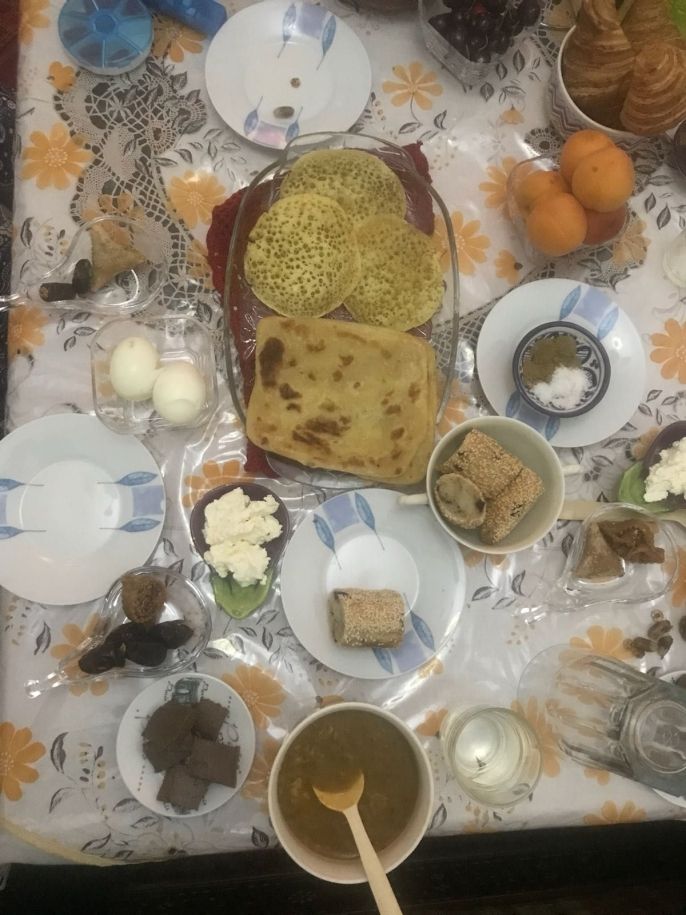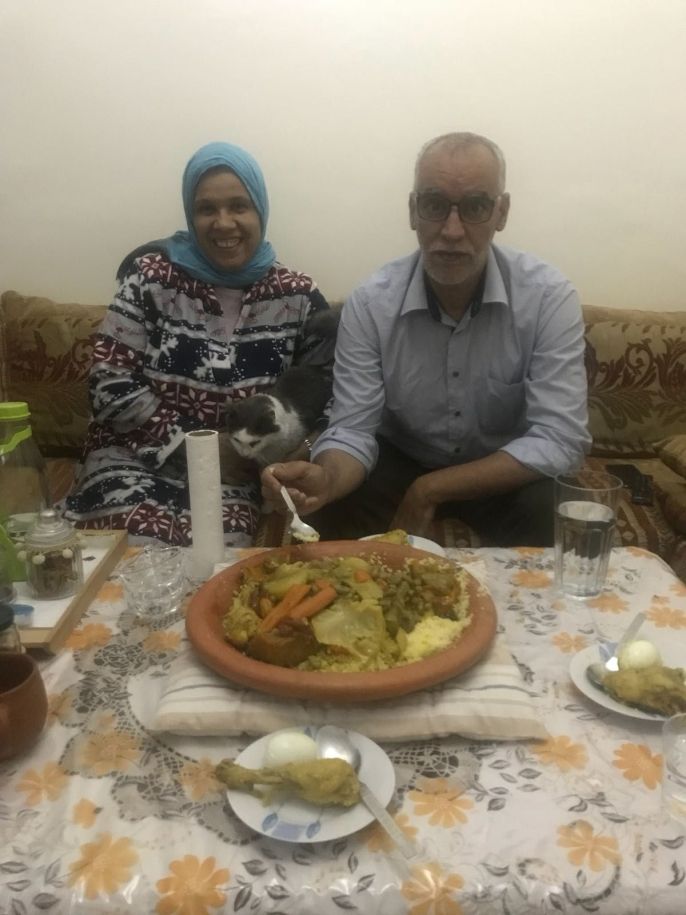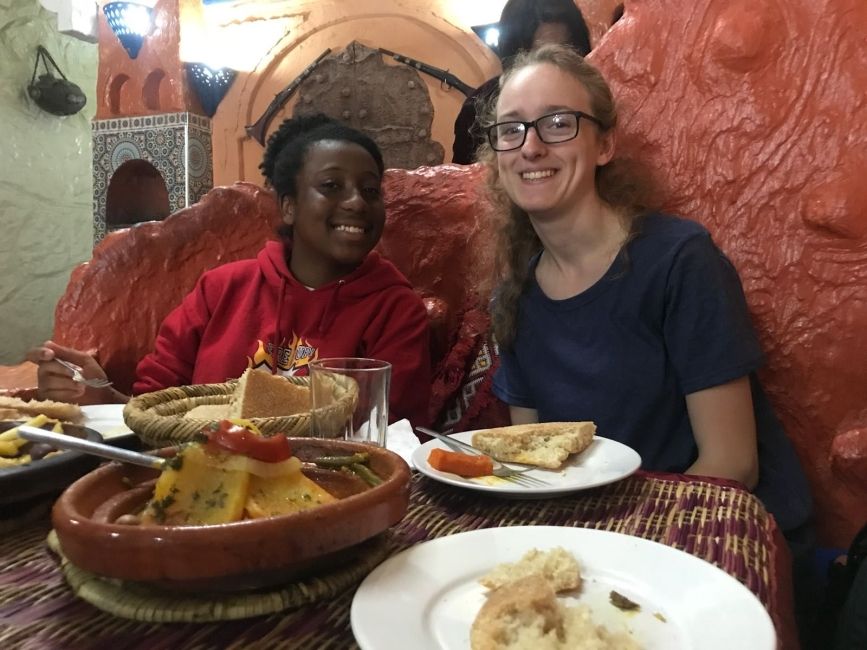Student Post: Claire Holloway
This post was written by Claire Holloway. The views and opinions expressed in this blog are those of the author and do not necessarily reflect those of CIEE.
“You’re in Morocco, eat it with your hands!”
This is what my Moroccan friend said as our waiter placed a big plate of hout (fish) in the middle of the table for all to share. With a bismillah (the Arabic phrase used before starting anything) my American friends and I proceeded to dig in.
Communal eating exemplifies Morocco’s collectivist culture. Collectivist cultures put the needs and desires of the community as a whole above those of the individual. This differs greatly from the U.S., which leans toward the individualist side of the spectrum. After spending more time with my host family and exploring more of the country, I have come to appreciate, and sometimes prefer, the collectivism of Morocco.
Our group arrived during the last week of Ramadan, which was a great time to be introduced to this collectivism. I experienced the call to prayer after sundown, which is done in mosques, and broadcast on certain TV stations as well. Since there are countless mosques throughout the city, the singing of the muezzins can be heard by most. After this, all people eat Iftar, the meal to break the fast, at the same time as a community. My host parents prayed together, and then we sat down to eat.
My host mother set out numerous protein, carbohydrate, and fiber-rich foods. Baydh (eggs), herira (Moroccan soup with tomatoes, garbanzo beans, and lentils), reif (a type of bread made from simply flour and water), and mushmush (apricots) were just of few of the foods. We served ourselves using our hands, and sometimes pieces of bread to scoop up the juicier foods such as laham (meat) and fool (beans).
Everything is done communally, and all is shared. The call to prayer summons everyone, and all people pray and eat at the same time. On another level, in each home, members of the family eat directly from the same bowl. This new way of eating has become normal for my American friends and me. We love going to the Moroccan restaurant together to share a tajine. In this culture, there is a connection between all members of the community. I can’t wait to discover more aspects of Morocco’s collectivism. Maybe go to the hammam, the communal bathhouse?
Related Posts
Weekend in Marrakesh
Our Weekend in Marrakesh - This blog was written by one of our students - Nyx Lange Reflecting on our past weekend excursion to Marrakesh from our Moroccan base of... keep reading
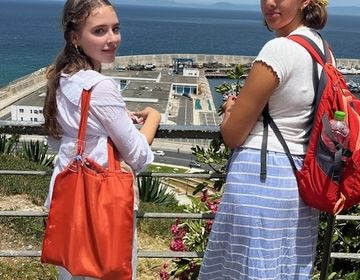
Exploring Tangier: A Day in Morocco's Gateway to Africa
This past weekend, our group ventured to the north of Morocco to the vibrant city of Tangier where the Mediterranean Sea meets the Atlantic Ocean First, we met our guide... keep reading
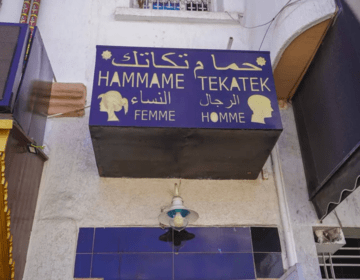
Bssaha wa Raha L'hammam🚰🪣🧼 بالصحة و الراحة الحمام
By Program Leader, Mohsin: Hey everyone! As your Moroccan program leader, I’m thrilled to introduce you to one of our country’s most cherished traditions: the hammam. If you’ve never heard... keep reading
